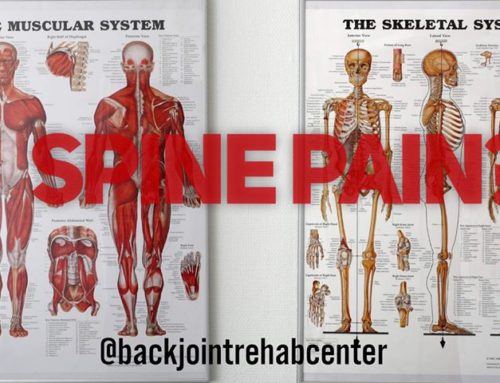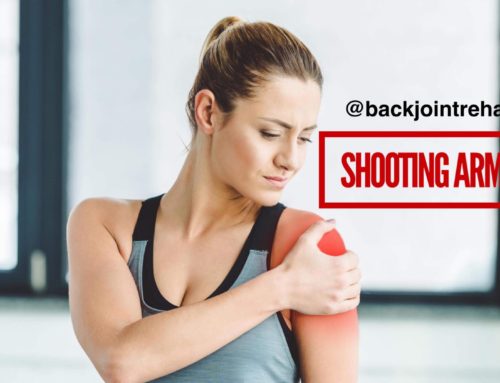PART 3: SHOULDER TENDINITIS
In the Third Part of the Shoulder Series, we discuss the pain and problems associated with Shoulder Tendinitis. This article will help you identify characteristics associated with Shoulder Tendinitis so you can begin correcting the problem.
The shoulder is a common area of complaint and is one of the most common sport injuries; especially to overhead athletes. Individuals who participate in repetitive overhead activities, whether recreational, occupational, or in their daily routine, are more prone to develop shoulder tendinitis. The muscles and tendons of the shoulder help stabilize the shoulder and propel movement. The use of these structures and the interaction with surrounding structures help keep the shoulder moving smoothly or if used inappropriately, it can lead problems such as tendinitis.
Shoulder Tendinitis is described as inflammation to the tendons of the muscles near the shoulder. Most commonly, these tendons are the rotator cuff tendons; specifically, the supraspinatus tendon. Other times it can be the tendon of the long head of the biceps. The tendons that surround the shoulder can become irritated and the inappropriate friction leads inflammation.
ROTATOR CUFF TENDINITIS
The tendons of the rotator cuff muscles form a “cuff” around the shoulder joint to help keep the shoulder secure in its socket. However, the tendons also act as primary movers for the shoulder. The supraspinatus tendon helps raise the arm when reaching overhead. Due to the position of the supraspinatus tendon, it acts as a lever for the initial process of raising the arm and depresses the glenohumeral joint to maintain the shoulder in place throughout the movement.
The main symptoms associated with shoulder tendinitis is pain. There will be no loss of range of motion. Pain may limit you from moving the arm because it is intolerable, but there will be no absolute loss of range of motion. The increased pain with activity is self-perpetuated by repeated movement to an inflamed tendon. The tendinitis will need reduction of activity, anti-inflammatories, and possibly other pain tolerance mediators such as ice.
The initial aim is to rid of the inflammation prior to introducing shoulder rehab. Due to the inflammatory presence, the pain will be constant, until the inflammation subsides. Then, the shoulder pain may become intermittent which suggests underlying mechanical issues of the shoulder. Correcting the shoulder movement would follow in a treatment plan to fully resolve the tendinitis. In other severe cases, over the counter anti-inflammatories are not enough to help alleviate the inflammatory driven pain. In these cases, a steroid injection is administered into the tendon to reduce inflammation. Rare instances where conservative measures do not help, arthroscopic surgery is recommended.
BICIPITAL TENDINITIS
Shoulder pain may lead you to think it the pain has something to do with the shoulder specifically, but pain in the shoulder doesn’t always mean it is attributed because of shoulder structures. Another common form of tendinitis that affects the shoulder is bicipital tendinitis.
The bicep is a muscle that is formed from two muscle bellies, hence the term “bi-“ in the word biceps. One is called the short head of the biceps and the other is called the long head of the biceps. The long head of the biceps attaches to a part of the shoulder blade that passes over the top of the shoulder joint. The long head of the bicep attaches to the supraglenoid tubercle of the scapula. The bicep is intended to flex the elbow, but it also helps in raising the shoulder. If the bicep becomes repetitively overused in a harmful manner, it can also lead to inflammation of the tendon. The overuse injury may be created for various reasons: overtraining, poor mechanics, straining, compensated movement, or injury.
The pain will typically be positioned more in the front of the shoulder rather than the top of the shoulder. When inflamed, the pain will also be constant, continued irritation will happen when symptoms are ignored and activity continues without restriction. The pain may also be provoked by placing strain on the biceps as in curling or bending the elbow with some form of resistance.
The acute treatment approach is similar to rotator cuff tendinitis. First aim is to reduce the inflammatory presentation. Begin with rest, reduction in activity, anti-inflammatories, and ice. As the inflammatory process subsides, beginning rehab for the area is the next stage in treatment. Focusing on exercises that place mild resistance to the tendon while moving the arm is important to remodel the damaged tendon. In more severe cases, steroid injection or surgery may also be recommended if it does not respond to conservative forms of treatment.
SHOUDLER TENDINITIS PAIN PRESENTATION
- Localized Pain
- Constant Pain
- No Loss of Range of Motion
- Feelings of Weakness Due to Pain (Absolute Strength is Not Lost)
- Increased Shoulder Movement, Increases Pain
- Decreased Shoulder Movement, Decreases Pain
- Pain with Compressing the Affected Area
- Pain with Contracting the Muscles or Tendons of the Affected Area
- Pain with Elongating the Muscles or Tendons of the Affected Area
If you or someone you know struggles with Shoulder Tendinitis or other shoulder problems, please give us a call. We help people who suffer from all types of physical injuries.
We are Dedicated to Get You Better Through Movement…
For Appointments Call (219)-310-8822
Dr. Artemio Del Real DC, Cert. MDT, CSCS





![PART 4: SHOULDER SERIES – 5 MOST COMMON DIAGNOSIS [SEPARATED SHOULDER]](https://backjointcenter.com/wp-content/uploads/2017/03/SeparatedShoulder3-500x383.jpg)
![Runners Series: 7 Most Common Injuries to Avoid…[PART 6]](https://backjointcenter.com/wp-content/uploads/2017/01/shin-500x383.jpg)